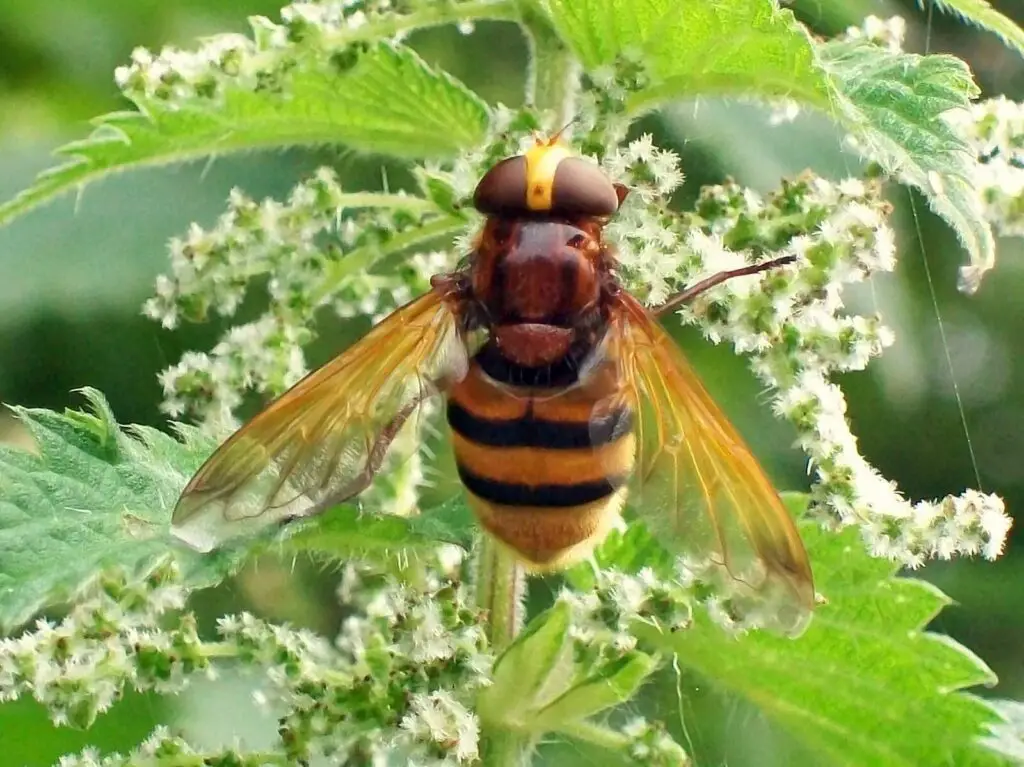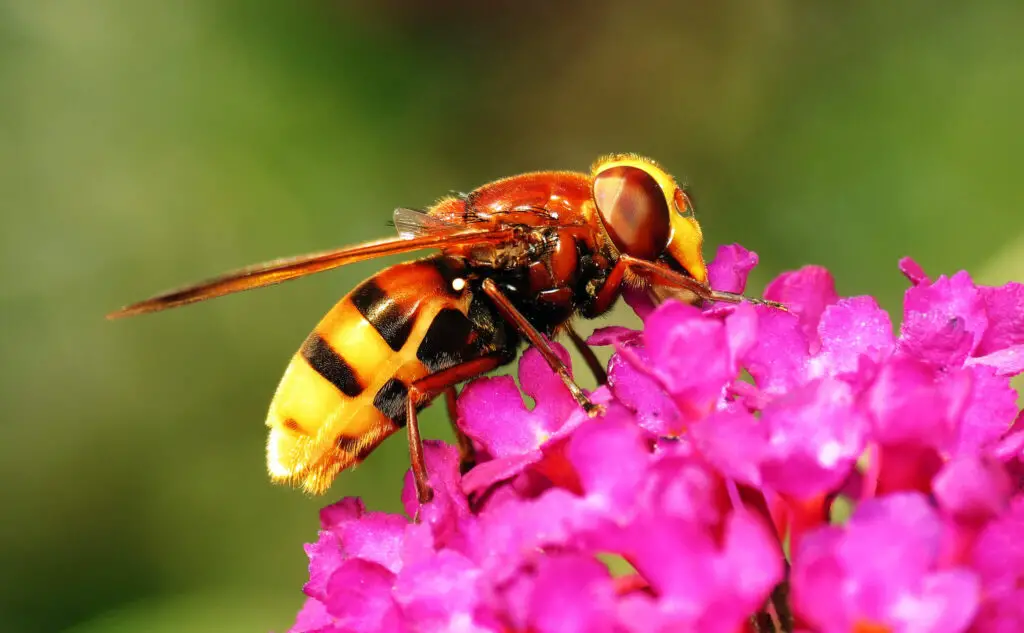Ah, the hornet hoverfly, a creature of mimicry and wonder! This fascinating insect goes by the scientific name Volucella zonaria. It’s one of the UK’s largest and most impressive flies, a master of disguise and a true marvel of nature.
Though it mimics the fearsome hornet, this critter is as gentle as they come. A native of the United Kingdom, its appearance can cause quite a stir. But worry not! We’ve got all you need to know in this comprehensive guide.
What is a Hornet Hoverfly?
The Hornet Hoverfly UK, scientifically known as Volucella zonaria, is one of the largest hoverflies in the UK. It’s a fly that mimics a hornet to fend off predators. But unlike hornets, this insect is completely harmless.
Quick Facts
| Attribute | Information |
|---|---|
| Scientific Name | Volucella zonaria |
| Family | Syrphidae |
| Size | 15-20mm |
| Habitat | Gardens, woods, and meadows |
| Season | Late Spring to Early Autumn |
Hornet Mimic Hoverfly: What Does It Look Like?
Looking at its vibrant yellow and black bands, you might mistake it for a hornet. This mimicry provides it a form of protection, fooling predators into giving it a wide berth. Adult hornet hoverflies are large, usually 15-20mm in length.
- Colour: Yellow and black banded abdomen
- Notable Features: Resembles a dangerous, stinging hornet
- Additional Traits: Chestnut on tergite 2, scutellum, and much of the thoracic dorsum

When and Where Can You Spot One?
| Time of Year | Location |
|---|---|
| May to October | Throughout the UK, especially in London, the South, and South East of England |
Keep your eyes peeled from May to October, especially if you’re in London or the southern regions of the UK. The insect has been making its way north and has even been spotted in Cheshire.
A Symbiotic Lifestyle
- Larval Habitat: Nests of social wasps
- Diet: Debris and rubbish in wasp nests
- Relationship with Wasps: Commensalism or symbiosis
The larva of the hornet hoverfly has a rather cosy arrangement with social wasps. They live in their nests without getting stung and feed on the debris and rubbish there. In return, the wasps get a free cleaner. It’s a win-win!
A Brief History
- First Colonized Britain: Early 1940s
- Initial Status: Once regarded as rare
- Current Status: Well-established, especially in southern regions
The hornet hoverfly first made its British debut in the early 1940s. Back then, it was considered a rare find. However, as the climate has warmed, this fly has become well-established, particularly in London and the southern parts of England.
Habitat and Distribution
These hoverflies prefer gardens, woods, and meadows. They are most commonly found in the southern parts of England. Over the years, sightings have increased in the north, suggesting a broader distribution.
Behavior and Diet
The hornet hoverfly is a pollinator, my friends! That means it’s good for your plants and helps the ecosystem. Adult hoverflies feed on nectar and pollen. Their larvae feed on organic matter and are even known to consume aphids.
What They Eat
- Adult: Nectar and Pollen
- Larvae: Organic matter and Aphids
Importance to Ecosystem
Don’t shoo them away! These hoverflies are beneficial insects that contribute to pollination. The larvae help control aphid populations, making them a natural form of pest control.
How to Attract Them to Your Garden
Interested in inviting these harmless mimics to your yard? Consider these:
- Plant nectar-rich flowers.
- Maintain a pesticide-free environment.
- Keep some organic matter around for the larvae.
Safety Precautions
Despite their intimidating looks, hornet hoverflies are harmless. However, their appearance might attract real hornets or wasps to your garden.
- Keep sugary foods sealed
- Maintain a safe distance
Conclusion
The hornet hoverfly is a wonder of natural mimicry, but it’s also a boon for gardeners and the environment. The next time you see one, don’t fret! Let it buzz its way through your garden, doing what it does best—helping nature thrive.
And there you have it—a complete guide to the hornet hoverfly in the UK. A harmless impostor with a flair for the dramatic, but a hero in the garden. 🌻🦟
Final Thoughts
The hornet hoverfly is a marvel of nature, a creature that has mastered the art of mimicry for survival. It’s a fascinating subject for both amateur naturalists and seasoned entomologists. So the next time you think you spot a hornet, take a closer look. It might just be this harmless, yet captivating, hoverfly.
References:
Featured Image Credits: “Volucella zonaria” by Martin Cooper Ipswich is licensed under CC BY 2.0.

